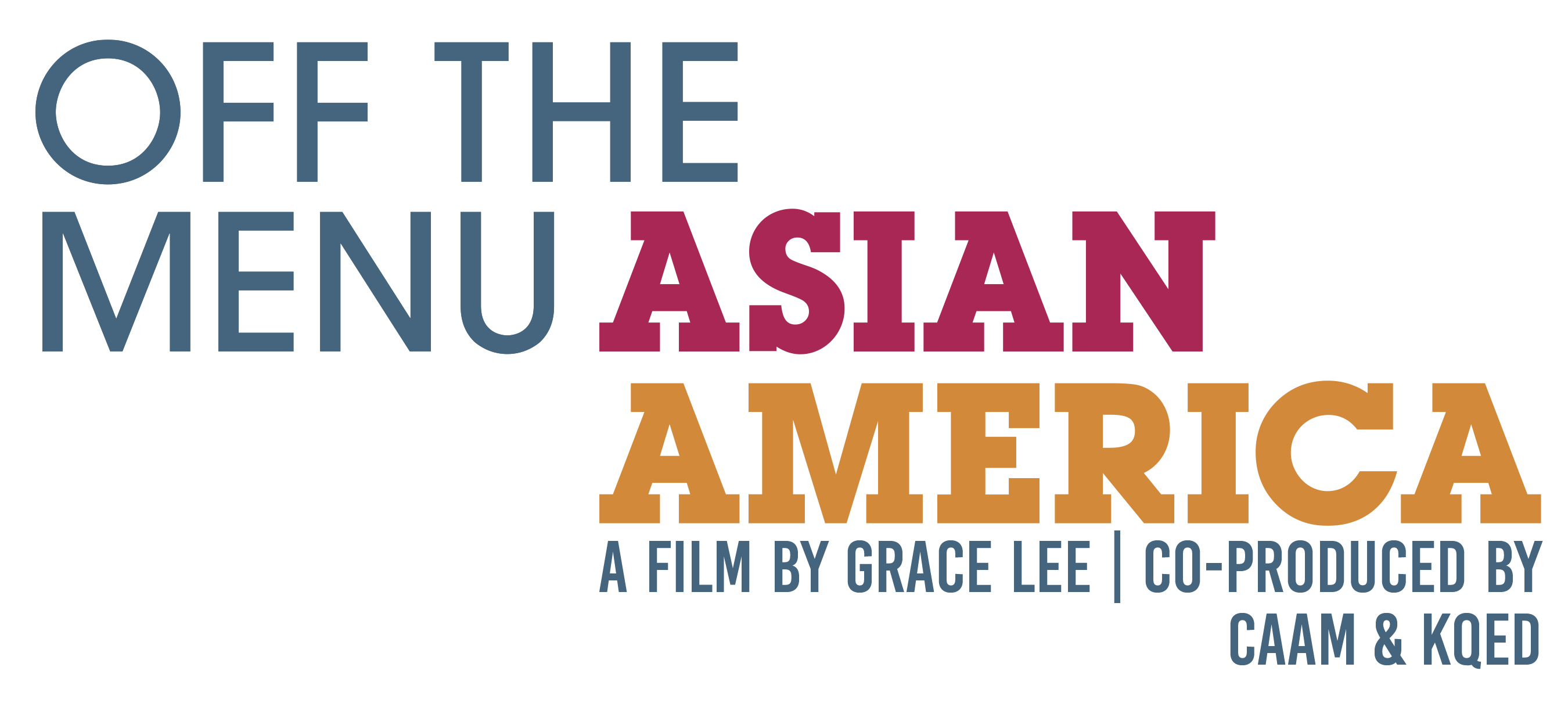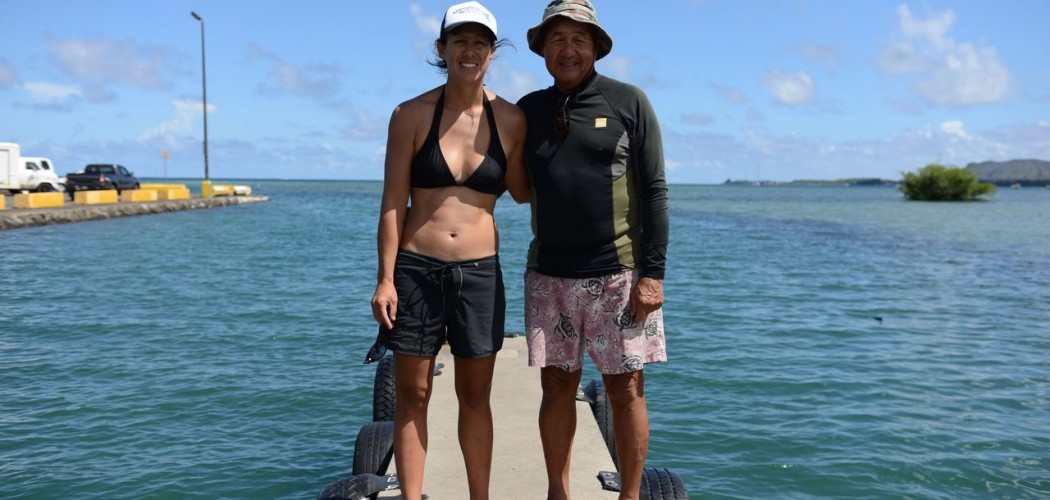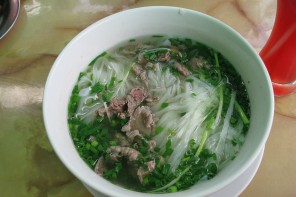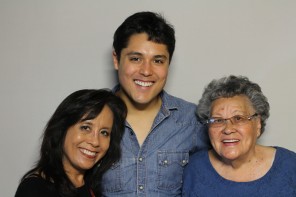In Off the Menu: Asian America, we meet is Hi’ilei Kawelo, a steward of a traditional Hawaiian fishpond in Oahu. Kawelo grew up on the windward side of Oahu, attending traditional family luaus, and watching her fisherman father, Gabby Kawelo, spear for octopus in the local waters. She eventually learned her father’s trade and hopes to carry on Hawaiian food traditions herself and help the younger generation understand the rich history of Native Hawaiian ways of farming, fishing and eating.
A little about ancient Hawaiian fishponds: they were a unique form of aquaculture where walled ponds next to the ocean allowed fresh and salt water to mix. Fish would come into the ponds and eat the algae, allowing locals to catch fish. Fishponds in Hawaii, in most of the islands, once numbered 100, but very few are in use today. Kawelo is the Executive Director of the Paepae o He’eia, a nonprofit that takes care of an 88-acre traditional Hawaiian fishpond in Kaneohe Bay, on land owned by the Kamehameha Schools, built some 800 years ago. Today, the organization is one of the few actively restoring a traditional fishpond.
Below, Hi’ilei Kawelo shares more about her passion for Hawaiian traditions, her family, and food.
What were some of your earliest food-related memories?
Some of my earliest food-related memories include gathering limu (seaweed), cleaning wana (sea urchin) cleaning and gutting fish. When I was a kid, for some reason or another, I really enjoyed eating fish eyeballs; not the case anymore today!
 When was the first time you went spearing for octopus with your dad? Do you remember what that was like?
When was the first time you went spearing for octopus with your dad? Do you remember what that was like?
When I was a kid, I remember my dad diving in a wool sweater to keep him warm while in the water. At the age of 4 I would put on my mask, snorkel and fins and hang on to my dad’s wool sweater, towing me around while he looked for heʻe (octopus).
When you think about the times you’ve spent with your dad spearing for octopus, or preparing family luaus from scratch, which takes days of work, how does it make you feel?
Fishing, gathering and the preparation of food for family lūʻau, it’s the binding agent within our ʻohana. It’s what we do and what we do well. Possessing these skills, the ability to catch heʻe (octopus) and fish, being able to prepare our family recipes and feed people, it’s empowering and comforting all at the same time. To have complete confidence in my abilities and to know that it comes from family tradition, from our kūpuna (ancestors); I am able to maintain that connection with them even if they are gone.
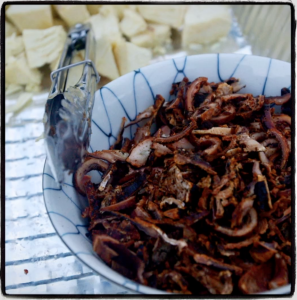 In the film, you say that “food has mana.” What is mana, or what does it mean to you?
In the film, you say that “food has mana.” What is mana, or what does it mean to you?
Here is the first definition of ʻmanaʻ in the Hawaiian Language Dictionary:
1. nvs. Supernatural or divine power, mana, miraculous power; a powerful nation, authority; to give mana to, to make powerful; to have mana, power, authority; authorization, privilege; miraculous, divinely powerful, spiritual; possessed of mana, power. Cf.-āmana. Mana makua, parental authority. Leo mana, voice of authority that is obeyed. Mana kiaʻi, guardian power. Mana loa, great power; almighty. Noho mana, to wield power, occupy a position of power. Ke kumu … i mana ai ka ʻaoʻao aliʻi, the reason for giving the chief’s side power. E mana ana nō i ke konohiki (Kep. 159), it is the privilege of the landlords. E mana nō ma ka lā ʻumi, effective on the tenth day [as a law]. hoʻo.mana
Mana is a spiritual power or essence. Mana is something that you work for, you donʻt just have it or possess it. Mana is acquired over time through your teachings, experiences and ultimately your actions. When I say “food has mana,” Iʻm talking about food that is grown, gathered, harvested and prepared, a product of knowledge. SPAM doesnʻt have mana! If I give you heʻe (octopus) for some reason or another, it may be for a family party or as a means to say mahalo (thank you), that gift embodies all the teachings of my ʻohana (family), that gift is from me, from my dad, from my grandfather, from his father and so on.
What is something about Native Hawaiian food and traditions that people outside of Hawai’i don’t know about?
That the most common traditional Hawaiian food items were fish (seafood) and poi. Most fish was eaten raw with a simple seasoning of a little sea salt, inamona (kukui nut) and limu (seaweed). Puaʻa kālua (kālua pig) was reserved for only special occasion; eating dog was more common than eating pig. When you purchase a ticket to attend a Hawaiian lūʻau while on vacation here in Hawaiʻi or even if you go to a Hawaiian food establishment, the majority of the items on the menu are not traditional Hawaiian dishes! Things like lomi salmon, chicken long rice and pineapple are not traditionally Hawaiian. These dishes represent the hybrid of ethnicities found here in Hawaii. While not traditionally Hawaiian, they are still ʻono (delicious).
 Can you tell us a little about the fish pond, and how it’s doing now?
Can you tell us a little about the fish pond, and how it’s doing now?
The fishpond is awesome! In a couple of months, by the end of December, we are due to complete a huge restoration project; the closing a large puka (hole) in our fishpond wall that was created as a result of a flood in 1965. This year in 2015, 50 years later, the hole in our wall will be no more, enabling us to really shift our focus to that of fish production.
How are all the food systems in Hawai’i connected, including taro farms, organic farms like MA’O, which is also featured in the film, and the traditional fish ponds?
If you consider the remoteness of the Hawaiian archipelago and the challenges that isolation presents, you can then understand our struggle to preserve our island way of life. Our resources here are finite! We all support each other here, because we have to! We are the minority here, those of us that want to preserve our subsistence lifestyle, those of us that see the urgency in preserving and utilizing our ancestral wisdom to solve our food security problems, those of us that have to fight off development and an increasing population, those of us that are advocates for a healthy land and sea. We band together because we are stronger that way; itʻs like a ball of schooling fish surrounded by a sea of predators. In the end we will be victorious. Why? Because food is the common denominator!
 Hear from more Hi’ilei Kawelo, her father, and many more in Off the Menu: Asian America, premiering nationally on PBS December 8, 2015. Check local listings.
Hear from more Hi’ilei Kawelo, her father, and many more in Off the Menu: Asian America, premiering nationally on PBS December 8, 2015. Check local listings.
